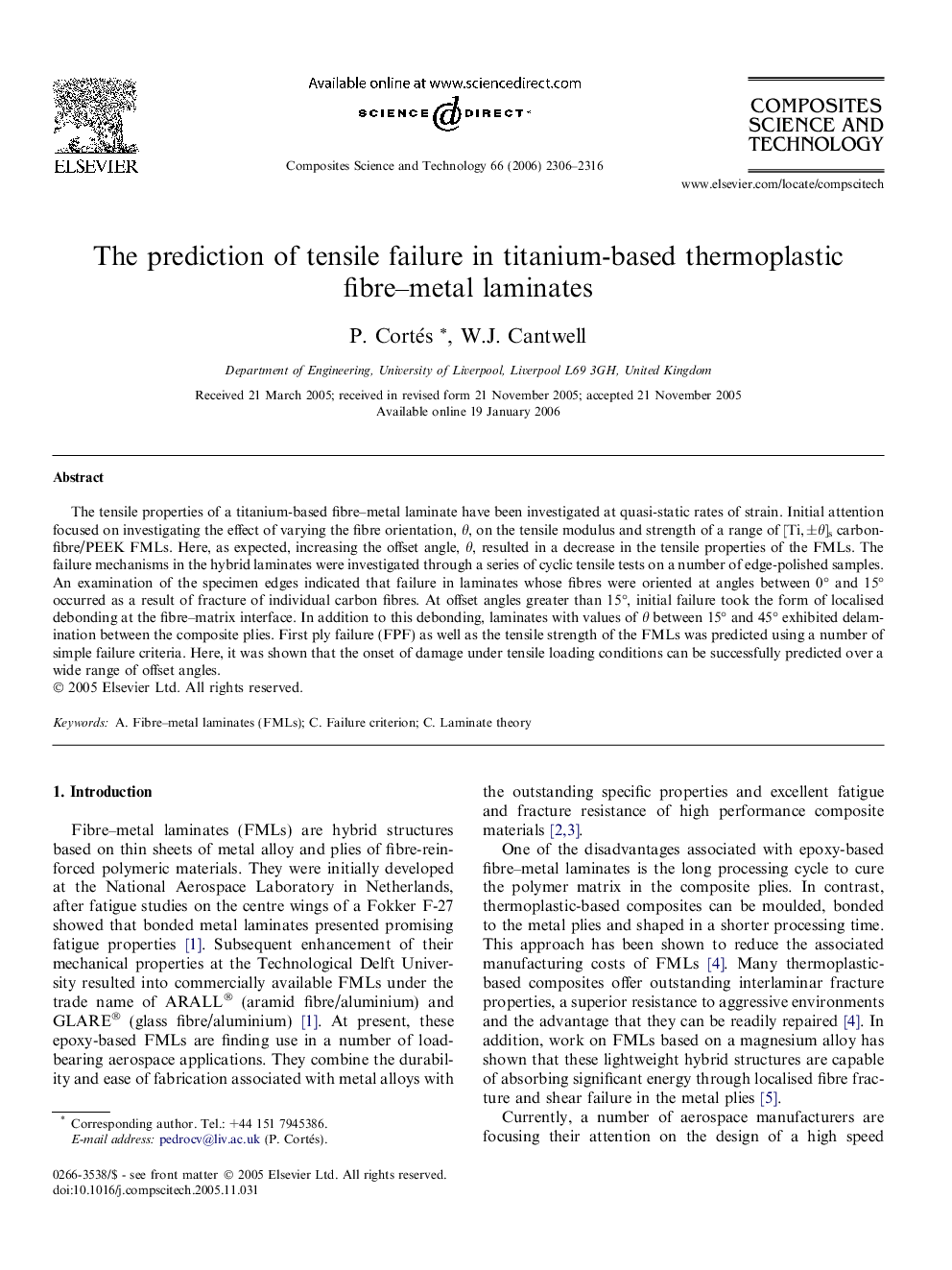| Article ID | Journal | Published Year | Pages | File Type |
|---|---|---|---|---|
| 823094 | Composites Science and Technology | 2006 | 11 Pages |
The tensile properties of a titanium-based fibre–metal laminate have been investigated at quasi-static rates of strain. Initial attention focused on investigating the effect of varying the fibre orientation, θ, on the tensile modulus and strength of a range of [Ti, ±θ]s carbon-fibre/PEEK FMLs. Here, as expected, increasing the offset angle, θ, resulted in a decrease in the tensile properties of the FMLs. The failure mechanisms in the hybrid laminates were investigated through a series of cyclic tensile tests on a number of edge-polished samples. An examination of the specimen edges indicated that failure in laminates whose fibres were oriented at angles between 0° and 15° occurred as a result of fracture of individual carbon fibres. At offset angles greater than 15°, initial failure took the form of localised debonding at the fibre–matrix interface. In addition to this debonding, laminates with values of θ between 15° and 45° exhibited delamination between the composite plies. First ply failure (FPF) as well as the tensile strength of the FMLs was predicted using a number of simple failure criteria. Here, it was shown that the onset of damage under tensile loading conditions can be successfully predicted over a wide range of offset angles.
